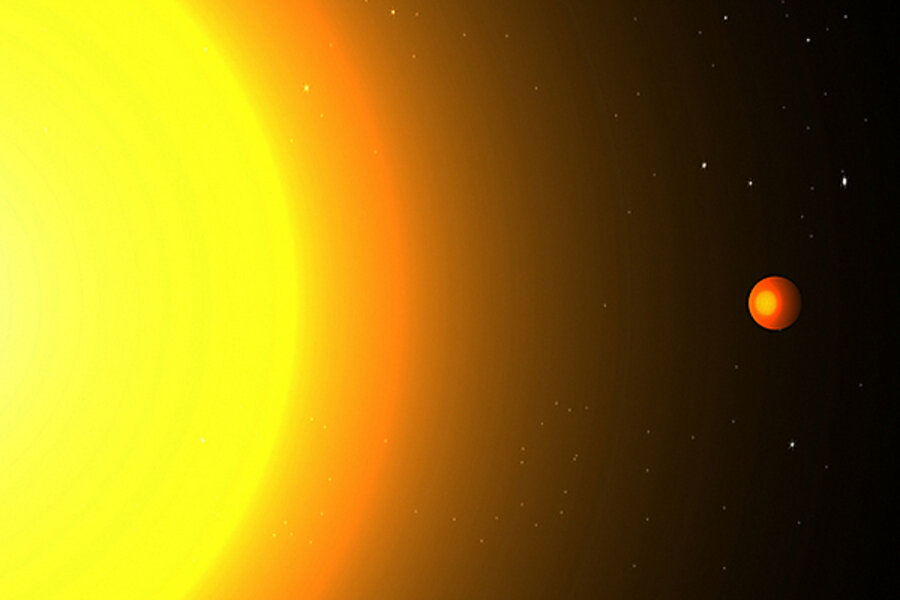By two measures, Kepler-78b is more similar to Earth than any planet yet found orbiting a sunlike star. Researchers estimate that Kepler-78b is a tad larger than Earth – 1.16 times larger, to be precise – and its mass is 1.86 times larger than Earth's. This is the smallest planet so far whose size and mass have been determined, and these two measurements allowed scientists to estimate its bulk density, and so its composition – mostly rock and iron.
But Kepler-78b orbits its host star, which is about 73 percent as large as the sun, once every 8.5 hours, implying that the planet is traveling at 687,000 miles an hour. It is so close to its sun that it's a lava world. Moreover, it's not going to be around much longer – on astronomical time scales. Its host star's gravity will draw it closer until the planet breaks up and vaporizes. The system is about 400 light-years away.






